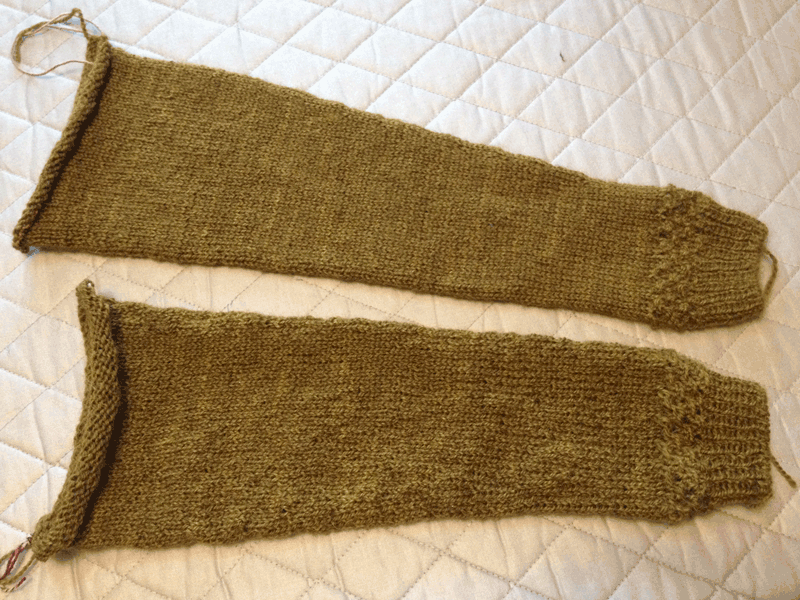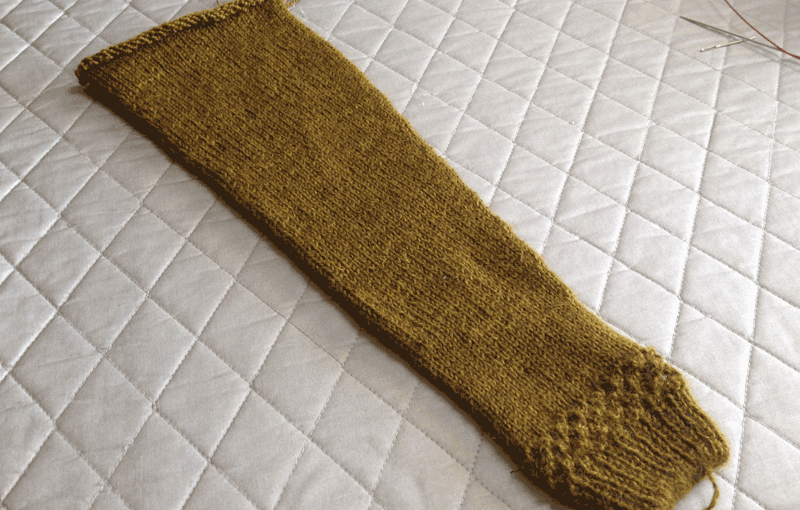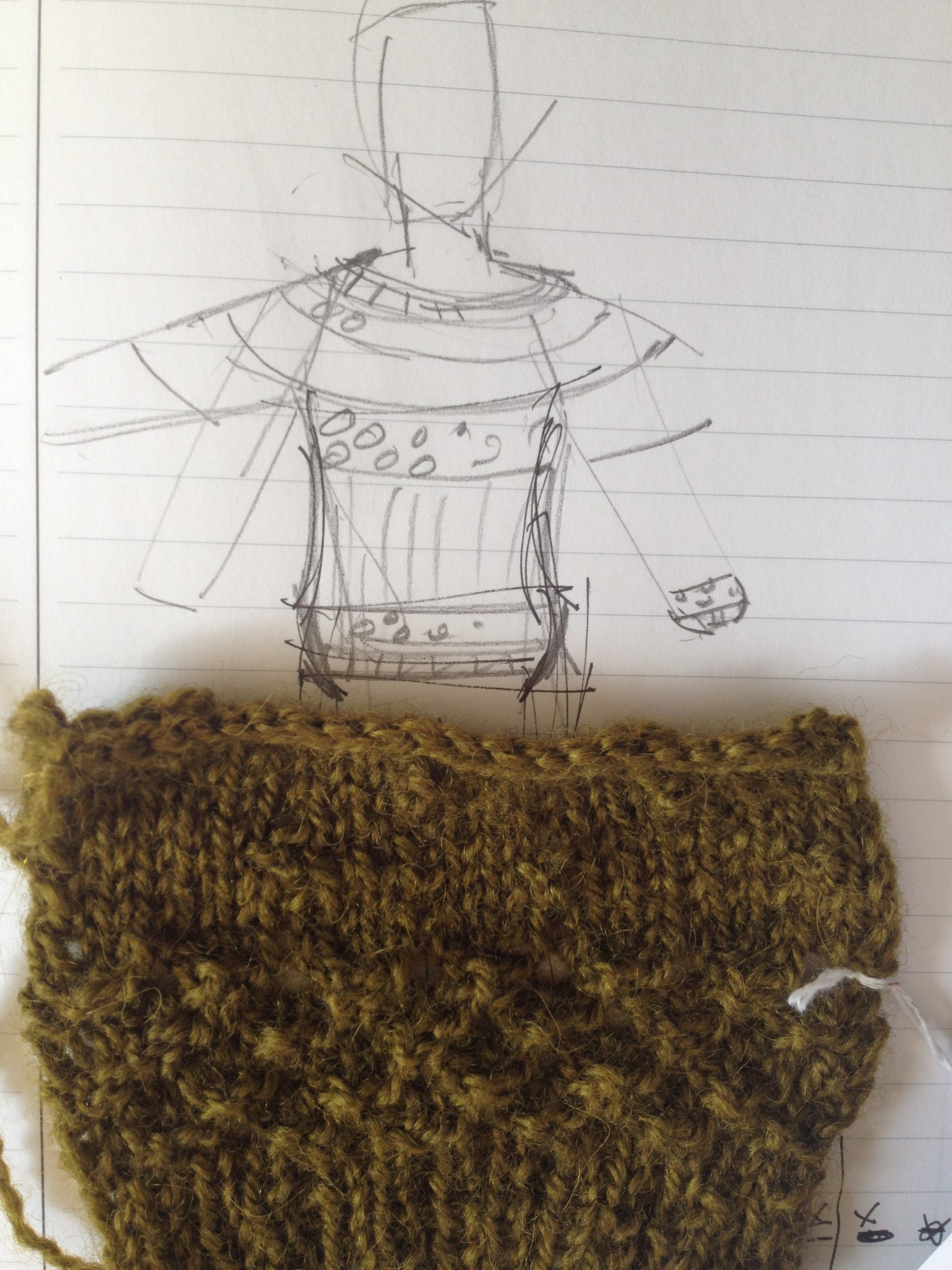A.K.A. the first sleeve.
Even though knitting patterns usually list the instructions for the sweater body before the sleeves, I almost always knit the sleeves first. Even if I’ve worked a gauge swatch and feel fairly confident that I’m on track size-wise, I like the idea of getting at least one sleeve knit, and blocked, to double check myself before I tackle the body. It’s not the end of the world to rip out and rework a sleeve, if necessary, but the heartache of learning that an entire sweater is wrong – aaagh! Plus, working the sleeves after the body always seems like a cruel interruption – the finish line seems so close, except for those two pesky appendages.
So, with my newest design, I have, of course, worked the sleeves first, and I did learn a few lessons. The sleeve stitches are just a bit narrower and longer than my swatch stitches. This is not a shocking revelation. I’m creating a fairly open fabric with a bit of drape this go-around, and in the past I’ve discovered that with a larger piece of a loose-ish knit fabric, the gauge can shift a bit. In this case, it’s no biggie. I will pull out a few rows to shorten the length of the first sleeve, and since I have skinny scarecrow arms, the width isn’t a problem – although I will adjust the stitch counts a bit when I write up the pattern. I did, however, take the opportunity to rework the stitch and row counts for the body before I cast on. I also learned that my tubular cast on at the wrist wasn’t quite as elastic as I wanted, so I adjusted my tubular technique when I cast on the hip cuff – I definitely want to make sure I have a bit of give there!

Also, keep in mind, when using a sleeve as a big swatch, blocking is an important part of the process. Here you can see one blocked sleeve (above), and one unblocked. It’s really hard the get a sense of the drape and fit of the bottom sleeve and I probably could have fooled myself that it would be perfect once it had a bath and a bit of a wrangling on a blocking mat.

